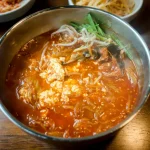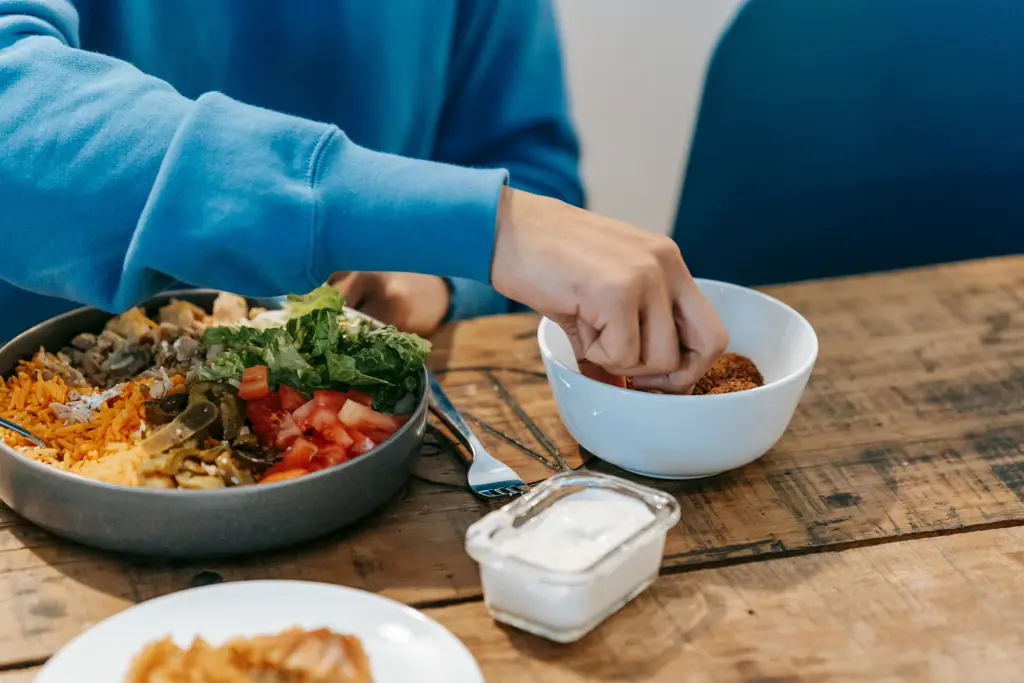Prepare to embark on a culinary journey to the vibrant streets of the Middle East, where the tantalizing aroma of sizzling chicken shawarma fills the air. This beloved dish, a cornerstone of Levantine cuisine, boasts a rich history and cultural significance that extends far beyond its delicious taste. While pinpointing its exact origins is difficult, shawarma’s roots are firmly planted in the Ottoman Empire, evolving from the older tradition of roasting meat on a vertical spit. The word shawarma itself is derived from the Turkish word çevirme, meaning to turn, a direct reference to the rotating spit on which the meat cooks.
The evolution of shawarma is a fascinating blend of culinary influences. It’s believed that the technique of vertical roasting, predating shawarma, was likely influenced by similar practices in other parts of the world. However, the specific combination of marinated meat, often lamb or chicken, cooked on a rotating spit and served in pita bread with various toppings, solidified shawarma’s unique identity in the Levant. Today, it’s a ubiquitous street food across the Middle East, North Africa, and beyond, with variations existing across different countries and regions. Its popularity is undeniable; some estimates suggest that billions of shawarma wraps are consumed globally each year, a testament to its widespread appeal.
Beyond its delicious flavors, shawarma holds a significant place in the social fabric of many cultures. It’s a common sight at street vendors, family gatherings, and even upscale restaurants, showcasing its versatility and adaptability. Shawarma stands as a symbol of culinary heritage, representing a fusion of techniques and flavors that have been passed down through generations. The preparation itself often involves a communal effort, from marinating the meat to assembling the final product, further strengthening its social and cultural importance. The act of sharing a shawarma meal often transcends the simple act of eating; it becomes a shared experience, fostering connections and celebrating cultural traditions.
This recipe will guide you through the process of making a classic chicken shawarma, focusing on authentic techniques and flavors. While achieving the perfect restaurant-quality result might require some practice, this recipe provides a solid foundation for creating a delicious and memorable meal at home. Get ready to experience the magic of shawarma firsthand, and discover why this dish has captivated palates worldwide for centuries.
Ingredients and Measurements
This recipe yields approximately 6 servings of delicious Chicken Shawarma. Accurate measurements are crucial for achieving the perfect balance of flavors and textures. We’ll be using both weight and volume measurements where applicable to cater to different cooking styles and preferences.
Chicken: You’ll need 2 lbs (approximately 900g) of boneless, skinless chicken thighs. Chicken thighs are recommended over breasts because they stay more succulent and tender during the marinating and cooking process. Avoid using chicken breasts unless you’re exceptionally careful to prevent them from drying out. Cut the chicken into 1-inch cubes. Ensure the pieces are relatively uniform in size for even cooking.
Marinade: The marinade is the heart of this dish, so using high-quality ingredients is essential. Here’s the breakdown:
- Lemon Juice: 1/2 cup (120ml) freshly squeezed lemon juice. Bottled lemon juice lacks the vibrancy and freshness of freshly squeezed juice.
- Olive Oil: 1/4 cup (60ml) extra virgin olive oil. This adds richness and helps keep the chicken moist.
- Garlic: 6-8 cloves garlic, minced. Don’t skimp on the garlic! It’s a key flavor component.
- Yogurt: 1 cup (240ml) plain Greek yogurt. Greek yogurt provides a creamy texture and tangy flavor. Full-fat yogurt is preferred for richness.
- Paprika: 2 tablespoons smoked paprika. This adds a smoky depth of flavor characteristic of shawarma.
- Ground Cumin: 1 tablespoon ground cumin. This warm spice complements the paprika beautifully.
- Ground Coriander: 1 tablespoon ground coriander. Adds a slightly citrusy and earthy note.
- Ground Cinnamon: 1 teaspoon ground cinnamon. A touch of cinnamon adds warmth and complexity.
- Turmeric: 1 teaspoon turmeric. Adds a subtle earthy flavor and a beautiful golden hue.
- Salt: 2 teaspoons salt. Adjust to your taste.
- Black Pepper: 1 teaspoon freshly ground black pepper. Enhances the overall flavor profile.
Optional additions to the marinade: For an extra kick, consider adding 1-2 teaspoons of cayenne pepper or a pinch of red pepper flakes. You can also add a tablespoon of lemon zest for an even brighter citrus flavor.
Serving suggestions: Serve your chicken shawarma with warm pita bread, hummus, tahini sauce, chopped tomatoes, onions, and pickles. Fresh herbs like parsley and mint are also a fantastic addition.
Note: The quantities provided are guidelines. Feel free to adjust the spice levels to your preference. It’s always a good idea to taste the marinade before adding the chicken to ensure the seasoning is to your liking.
Marinade Preparation
The marinade is the heart and soul of delicious chicken shawarma. A well-balanced marinade not only tenderizes the chicken but also infuses it with the vibrant, aromatic flavors that define this beloved dish. This recipe calls for a generous marinade, ensuring every bite is bursting with flavor. We’ll be making approximately 1.5 liters of marinade, enough for about 2 kg (4.4 lbs) of chicken.
Ingredients:
- 1 cup (240ml) plain yogurt (full-fat recommended for richness): Choose a good quality, thick yogurt for best results.
- 1/2 cup (120ml) lemon juice (freshly squeezed is best): Freshly squeezed lemon juice provides a superior brightness and acidity compared to bottled juice.
- 1/4 cup (60ml) olive oil: Use a good quality extra virgin olive oil for optimal flavor.
- 1/4 cup (50g) finely chopped fresh parsley:
- 1/4 cup (50g) finely chopped fresh mint:
- 2 tablespoons ground cumin:
- 2 tablespoons ground coriander:
- 1 tablespoon paprika (sweet or smoked, depending on preference): Smoked paprika adds a deeper, smoky flavor.
- 1 tablespoon garlic powder:
- 1 tablespoon onion powder:
- 1 teaspoon ground cinnamon:
- 1 teaspoon ground allspice:
- 1 teaspoon cayenne pepper (or more, to taste): Adjust the cayenne pepper to your desired level of spiciness. Start with less and add more gradually.
- 1 teaspoon salt:
- 1/2 teaspoon black pepper:
Instructions:
In a large bowl, whisk together the yogurt, lemon juice, and olive oil until well combined. This creates a creamy base for your marinade. Ensure the yogurt is at room temperature for optimal blending.
Next, add all the remaining ingredients: parsley, mint, cumin, coriander, paprika, garlic powder, onion powder, cinnamon, allspice, cayenne pepper, salt, and pepper. Stir vigorously until all the spices are thoroughly incorporated and the mixture is evenly colored. Take your time to ensure every spice is properly distributed throughout the marinade.
Once all the ingredients are combined, taste the marinade and adjust the seasoning as needed. You might want to add more salt, pepper, or cayenne pepper depending on your preference. It’s crucial to taste the marinade before adding the chicken to ensure the flavors are balanced.
Finally, cover the bowl with plastic wrap and refrigerate for at least 30 minutes, or preferably overnight. The longer the chicken marinates, the more tender and flavorful it will be. Marination time of 4-6 hours is ideal, but overnight is even better. Allow the flavors to meld and penetrate the chicken for a truly exceptional shawarma experience.
Professional Tip: For an extra layer of flavor, consider adding a few tablespoons of pomegranate molasses to the marinade. This will add a touch of sweetness and depth to the overall flavor profile.
Chicken Marinating Process
The success of your chicken shawarma hinges significantly on the marinade. A well-marinated chicken will be incredibly flavorful, juicy, and tender. This process typically takes at least 4 hours, but ideally, overnight marinating in the refrigerator is recommended for the best results. The longer the chicken marinates, the more deeply infused the flavors will become.
For this recipe, we’ll be using 2 lbs of boneless, skinless chicken thighs, cut into 1-inch cubes. You can substitute with chicken breasts, but thighs are generally more forgiving and less likely to dry out during cooking. Ensure your chicken is completely thawed before beginning the marinating process. Partially frozen chicken will not marinate evenly.
In a large bowl, whisk together the following ingredients for the marinade:
- 1/2 cup plain yogurt (full-fat recommended for richness)
- 1/4 cup lemon juice (freshly squeezed is best)
- 1/4 cup olive oil
- 2 tablespoons lemon zest
- 4 cloves garlic, minced or pressed
- 1 tablespoon ground cumin
- 1 tablespoon paprika (sweet or smoked, depending on your preference)
- 1 teaspoon ground coriander
- 1 teaspoon turmeric powder
- 1/2 teaspoon cayenne pepper (optional, for a spicier shawarma)
- 1 teaspoon salt
- 1/2 teaspoon black pepper
- 1/2 teaspoon dried oregano
Taste the marinade and adjust seasonings to your liking. Some people prefer a more intensely lemony flavor, while others might prefer a stronger spice profile. Feel free to experiment with different spice combinations to find your perfect shawarma marinade.
Add the cubed chicken to the bowl and ensure all the pieces are thoroughly coated with the marinade. Use your hands or tongs to gently toss the chicken until it’s evenly distributed. Once coated, cover the bowl tightly with plastic wrap or a lid. This prevents the chicken from drying out and helps maintain its moisture during the marinating process.
Refrigerate the marinated chicken for at least 4 hours, or preferably overnight. This allows the flavors to penetrate the chicken, resulting in a more tender and flavorful final product. If you are marinating for longer than 8 hours, it’s best to transfer the chicken to a resealable plastic bag to further minimize the risk of drying out.
Before cooking, remove the chicken from the refrigerator 30 minutes before cooking to allow it to come to room temperature. This helps ensure even cooking throughout the chicken pieces.
Important Note: Always ensure that your chicken is cooked to a safe internal temperature of 165°F (74°C) before serving. Use a meat thermometer to check the temperature in the thickest part of the chicken.
Vegetable Preparation
The vibrant vegetables in chicken shawarma are just as important as the marinated chicken. Proper preparation ensures they’re tender-crisp and flavorful, complementing the shawarma perfectly. We’ll be using a classic combination of tomatoes, onions, and cucumbers, but feel free to add bell peppers, shredded carrots, or other favorites.
Start with the onions: For this recipe, we’ll use 1 large red onion and 1 large white onion. Finely slice both onions. Avoid chopping them too small, as you want to retain some texture. Aim for thin, roughly ¼-inch slices. Soaking the sliced onions in cold water for about 15 minutes will help to mellow their sharpness and remove some of the excess sulfur compounds, resulting in a milder, sweeter flavor. After soaking, drain the onions thoroughly using a fine-mesh sieve.
Next, prepare the tomatoes: You’ll need 2 large ripe tomatoes for this recipe. Dice them into roughly ½-inch cubes. Choose ripe, but firm tomatoes to avoid mushiness. If you have access to heirloom tomatoes, their varied colors and slightly sweeter flavors can add a beautiful touch to the shawarma. Avoid using overly juicy tomatoes, as excess moisture can make the shawarma soggy.
Now for the cucumbers: Use 2 large cucumbers, preferably English cucumbers for their thinner skin and fewer seeds. Peel the cucumbers and slice them into thin half-moons, about ⅛-inch thick. Again, avoid making them too small; you want them to have a satisfying crunch. If using regular cucumbers, remove the seeds beforehand to prevent excess water.
Optional additions: To enhance the vegetable mix, consider adding finely chopped fresh parsley (about ½ cup) and fresh mint (about ¼ cup). These herbs add a bright, refreshing element to the shawarma. If you like a bit of heat, finely diced jalapeño pepper (about 1-2, depending on your spice preference) would be a delicious addition. Remember to remove the seeds and membranes for less heat, if desired.
Combining the vegetables: Once all the vegetables are prepared, gently combine them in a large bowl. Avoid overmixing, as you want to retain the individual textures of each vegetable. Season the vegetable mixture lightly with salt (about ½ teaspoon) and freshly ground black pepper (about ¼ teaspoon). You can also add a squeeze of fresh lemon juice (about 1 tablespoon) to enhance the flavors and brighten the colors. Taste and adjust the seasoning as needed.
Important Note: Prepare the vegetables just before serving or assembling the shawarma. This will prevent them from releasing too much water and becoming soggy. If you must prepare them ahead of time, store them separately in airtight containers and combine them just before serving.
Professional Tip: For a truly restaurant-quality shawarma, consider using a mandoline slicer to ensure consistently thin slices of onions and cucumbers. This will not only improve the visual appeal but also ensure even cooking and texture.
Cooking the Chicken (Grilling/Roasting/Pan-frying methods)
Once your chicken is marinated (refer to the marinating section for details), you’re ready to cook it. The beauty of chicken shawarma is its versatility; you can cook it using various methods, each yielding slightly different results. We’ll explore grilling, roasting, and pan-frying, highlighting their pros and cons.
Grilling: Grilling imparts a delicious smoky char and creates beautifully marked chicken. For this method, preheat your grill to medium-high heat (around 375-400°F). Ensure your grill grates are clean and lightly oiled to prevent sticking. Thread the marinated chicken onto skewers, leaving a small gap between each piece for even cooking. Grill for approximately 8-10 minutes per side, or until the internal temperature reaches 165°F (74°C). Use a meat thermometer to ensure the chicken is cooked through. Turn frequently to avoid burning and achieve even browning. Grilling is ideal for achieving that signature shawarma char, but it’s important to monitor the chicken closely to avoid flare-ups.
Roasting: Roasting is a great option for larger quantities of chicken and offers a more even cooking process than grilling. Preheat your oven to 400°F (200°C). Spread the marinated chicken in a single layer on a large baking sheet. Avoid overcrowding the sheet; this will ensure even cooking and prevent steaming. Roast for 30-40 minutes, or until the chicken is cooked through and reaches an internal temperature of 165°F (74°C). For extra crispy skin, you can broil the chicken for the last 2-3 minutes, keeping a close eye to prevent burning. Roasting provides a more tender and juicy result compared to grilling, making it a good choice if you prefer a less charred flavor.
Pan-frying: Pan-frying is a convenient method, especially for smaller portions. Heat 2 tablespoons of vegetable oil in a large skillet over medium-high heat. Avoid overcrowding the pan; work in batches if necessary. Add the marinated chicken pieces and cook for 5-7 minutes per side, or until golden brown and cooked through (internal temperature of 165°F/74°C). For extra flavor, you can add a tablespoon of the marinade to the pan during the last few minutes of cooking. Pan-frying is quick and easy, but it may not produce the same level of char or smoky flavor as grilling. It’s best for achieving a crispy exterior while maintaining a juicy interior.
Regardless of your chosen method: Always use a meat thermometer to ensure the chicken reaches a safe internal temperature of 165°F (74°C). Undercooked chicken can be dangerous, so don’t skip this crucial step. Once cooked, remove the chicken from the heat and let it rest for 5-10 minutes before slicing. This allows the juices to redistribute, resulting in more tender and flavorful shawarma.
Professional Recommendation: For the most authentic shawarma flavor, consider using a vertical rotisserie if available. This method slowly roasts the chicken, resulting in incredibly juicy and flavorful meat with perfectly crispy edges. However, this requires specialized equipment.
Shawarma Assembly
With your perfectly marinated and cooked chicken ready, it’s time to assemble your shawarma. This seemingly simple step is crucial for achieving that iconic shawarma experience – a perfect balance of textures and flavors in every bite. We’ll be building our shawarma on warm pita bread, but you can easily adapt this to other flatbreads like lavash or tortillas.
First, warm your pita bread. You can do this in a few ways: a dry skillet over medium heat for about 30 seconds per side until slightly puffy and warm, a microwave for 15-20 seconds, or even a warm oven (around 250°F/120°C) for 5-7 minutes. Overheating will dry the pita out, resulting in a less enjoyable eating experience. The goal is to make it pliable and warm, not crisp.
Next, prepare your toppings. A classic shawarma typically features a generous spread of tahini sauce (approximately 2-3 tablespoons per shawarma), a vibrant and tangy toum (garlic sauce, about 1-2 tablespoons), and a crisp salad. For the salad, finely chop 1/2 cup of red cabbage, 1/2 cup of tomatoes, and 1/4 cup of finely chopped parsley or cilantro. You can also add other vegetables like cucumbers or shredded carrots based on your preference. Don’t over-dress the salad; a light vinaigrette (a mix of olive oil, lemon juice, salt, and pepper) is sufficient to keep it fresh and flavorful.
Now, for the star of the show – the chicken. Slice your cooked chicken thinly, aiming for slices about 1/8 inch thick. This ensures that each bite contains tender, flavorful meat that’s easy to chew. If you have any leftover marinade, you can brush a little over the sliced chicken for extra flavor. Approximately 6-8 ounces of sliced chicken per shawarma is a good amount, but adjust to your preference.
Assemble your shawarma with care. Begin by spreading the tahini sauce evenly across the warmed pita bread, leaving about a half-inch border. Next, layer the toum sauce on top of the tahini. Then, add your prepared salad mixture, distributing it evenly. Finally, arrange the sliced chicken over the salad. You might want to slightly overlap the chicken slices for better coverage. Avoid overfilling the pita to prevent it from falling apart.
Optional additions can elevate your shawarma to the next level. Consider adding a sprinkle of your favorite spices, such as paprika or sumac, for an extra burst of flavor. A drizzle of extra virgin olive oil can enhance the richness, while a few pickled turnips or a squeeze of fresh lemon juice will add a vibrant tang. Experiment with different combinations to find your perfect shawarma profile.
Once assembled, gently fold the pita bread in half or roll it up tightly. Serve immediately to enjoy the best flavor and texture. Your homemade classic chicken shawarma is now ready to be savored! Remember, the key is balance – a harmonious blend of creamy sauces, fresh vegetables, and perfectly seasoned chicken within a warm, soft pita.
Recommendations for Classic Chicken Shawarma
For the most delicious and authentic Chicken Shawarma experience, consider these recommendations:
Marination is Key: Allow the chicken to marinate for at least 4 hours, preferably overnight. This ensures the chicken is thoroughly infused with the flavorful marinade, resulting in incredibly tender and juicy shawarma. Don’t be afraid to experiment with different marinade variations, adding ingredients like lemon zest, harissa paste, or smoked paprika for a unique twist. Ensure the chicken is completely submerged in the marinade for even flavor distribution.
Cooking Method: While a vertical rotisserie is traditional, you can achieve excellent results using a skillet, grill pan, or even a broiler. If using a skillet or grill pan, ensure the chicken is cooked through to an internal temperature of 165°F (74°C) to guarantee food safety. For the best browning and crispiness, sear the chicken over medium-high heat. If using a broiler, keep a close eye on the chicken to prevent burning and ensure even cooking.
Serving Suggestions: Serve your Chicken Shawarma in warm pita bread or on a bed of fluffy rice. Generously add your favorite toppings such as hummus, tahini sauce, garlic sauce (toum), chopped tomatoes, cucumbers, onions, and parsley. A squeeze of fresh lemon juice adds a wonderful brightness to the dish. Consider offering a variety of sauces for guests to customize their shawarma.
Complementary Dishes: Chicken Shawarma pairs beautifully with a variety of side dishes. A simple fattoush salad provides a refreshing contrast to the richness of the shawarma. Other excellent options include tabbouleh (parsley salad), baba ghanoush (smoked eggplant dip), or a vibrant Israeli salad. These sides add a balance of flavors and textures to the overall meal.
Storage and Reheating: Leftover Chicken Shawarma can be stored in an airtight container in the refrigerator for up to 3 days. Reheat gently in a skillet or microwave until warmed through. Avoid overcooking, as this can dry out the chicken. For best results, reheat small portions to retain moisture and flavor.
Nutritional Information (per serving, approximate): The nutritional content of Chicken Shawarma will vary depending on the ingredients and portion size. However, a typical serving (approximately 6 ounces of chicken with accompaniments) might contain approximately 400-500 calories, 30-40g protein, 20-30g fat, and 20-30g carbohydrates. These are estimates and can change based on the specific recipe and ingredients used. For precise nutritional information, use a nutrition calculator with your specific recipe details.
Important Note: Always ensure your chicken is cooked to a safe internal temperature to prevent foodborne illness. Adjust cooking times according to the thickness of your chicken and your chosen cooking method. Enjoy your delicious homemade Chicken Shawarma!





